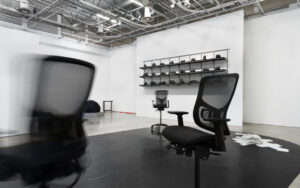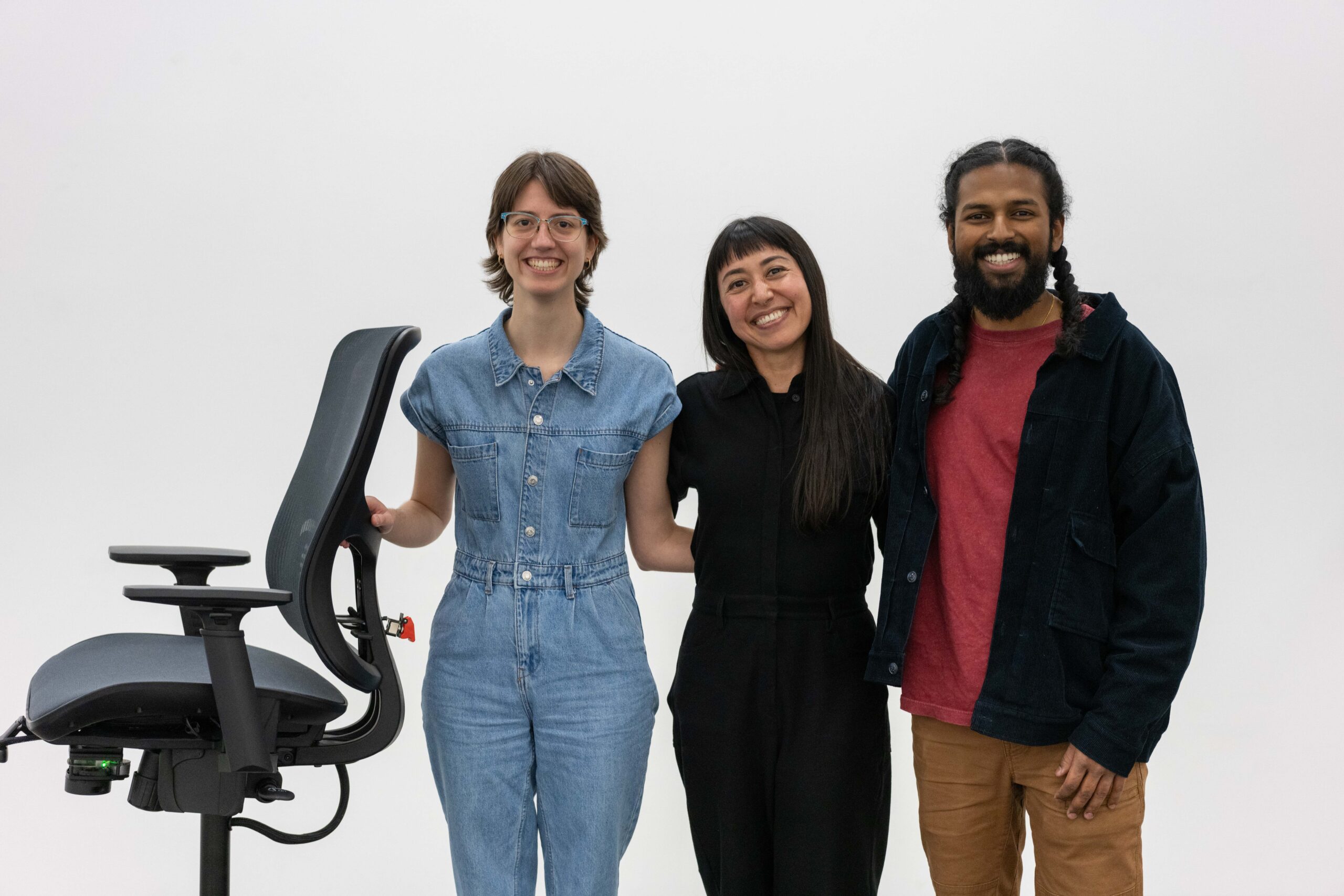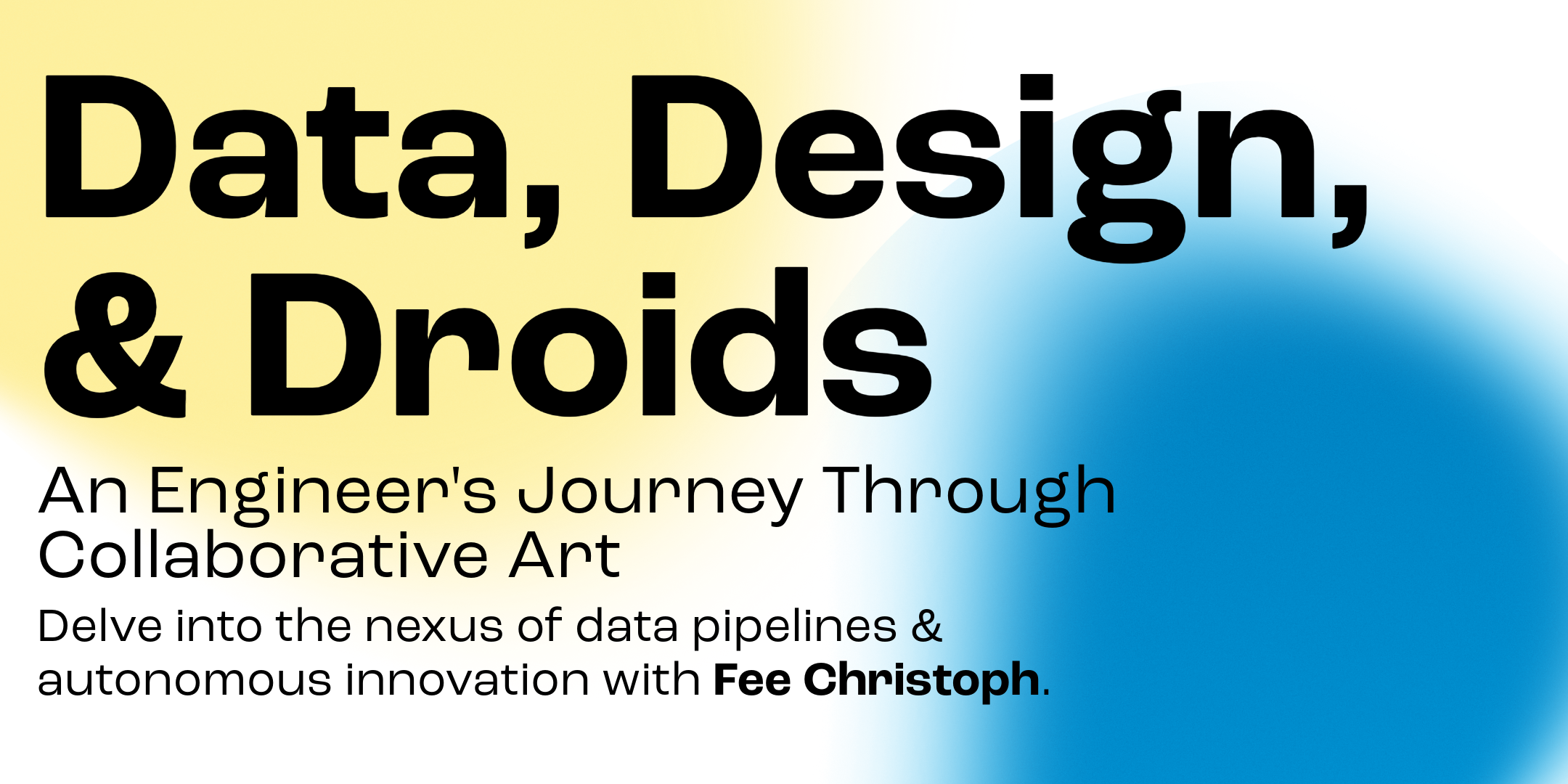As part of the UCI Master of Data Science (MDS) Program’s speaker series that features professionals with interdisciplinary backgrounds to explore data science across different industries, privacy software engineer Fee Christoph dove into the intersection of data science and art in her talk “Data, Design and Droids: An Engineer’s Journey through Collaborative Art” on March 28.
Christoph spoke about how data science requires creative thinking to interpret and create works that transform disciplines beyond technology, such as art. She centered her presentation on an interactive art installation she built: “Anonymous Autonomous,” which is from the show “Katherine Behar: Ack! Knowledge! Work!” and was on display at the UCI Beall Center for Art + Technology.

“Anonymous Autonomous” — an exhibit in which various office chairs crawl around by themselves — is the brainchild of artist Katherine Behar, which Behar ideated at Pioneer Works in 2017, prototyped at Robert Morris University in 2018, and brought to the University of Michigan (U-M) as a visiting artist in 2019. At the time, Christoph studied Interarts Performance and computer science at U-M; she graduated summa cum laude in 2021.
“I was part of the student team that was then tasked with figuring out how we could take these chairs from a pretty happy ‘yes, this is possible’ prototype stage that had been built out at Pioneer Works and into something that was actually able to be passed off to a gallery and to be operated by … people in the art world that could take care of these chairs,” said Christoph, who was the creative technologist, software designer and lead project engineer of “Anonymous Autonomous.”

Funded by the Mcubed grant, Behar brought together U-M’s Center for Ethics, Society, and Computing, Robotics Institute, Institute for Research on Women and Gender and Stamps School of Art & Design, among other disciplines. From the very beginning of her talk, Christoph emphasized the value of this interdisciplinary team, especially because she joined the project with little robotics knowledge.
“I knew how to go back to the different departments and disciplines that I was embedded in … to ask questions and find the people who knew more about robotics or knew more about hardware than I did and be able to bring their knowledge into the team and make things work,” she said.
Christoph then dissected the chairs in “Anonymous Autonomous,” which move in a space autonomously and know to stop or choreograph a way out when someone or something is in front of them.
She explained that the team intended for the chairs to move very slowly to illustrate their “struggle” and “decision-making.” The team created a “priority runbook” to help the chairs make decisions when they’re not controlled by a person. These priorities are “displayed and represented” as commands in the data; commands can come from a chair’s webcam or LiDAR sensor or a human operator.
“A command is basically a way that we developed to encapsulate some of the information about one: the priority of a specific type of movement, and then two: some information about that specific movement in terms of the left and the right motors and the speeds,” she said.

According to Christoph, there is “one continuous pipeline of data.” She highlighted how the final output of this pipeline is “a recommendation for how to move” — if the team created a different data pipeline, the chairs would also behave differently.
“This is something that really showcases how the design of the software inside of the chair actually helps make the aesthetic reality of the chairs,” Christoph said.
How people interacted with “Anonymous Autonomous” at showcases also heavily informed the team’s requirements. It was important to not only engineer chairs that work but also to ensure that this art could be operated by an ordinary person, requiring the team to test and iterate over the chairs often.
”An art piece as it stands will typically have multiple people taking care of it at different points in time, and you get to provide the tools for them to make that a really good experience,” Christoph said. “You want to build or use tools to make it easier to test and run the piece for both yourself and others.”
Christoph then reflected on her learnings from building “Anonymous Autonomous” with an interdisciplinary team. The first piece of advice she offered was to “find your connectors,” or people who have specialized knowledge in their respective disciplines. Their expertise can help you succeed and introduce you to a variety of perspectives that will shape your work.
She also encouraged others to not let their lack of knowledge in a certain area stop them from participating in interdisciplinary projects, drawing on her experience of learning robotics on the fly during “Anonymous Autonomous.”
“No one on an interdisciplinary team is going to know how to do the whole thing typically,” Christoph said. “I think that’s one of the coolest parts of it … by bringing the team together, you get to build something that is larger than the sum of your individual skill sets … there are so many ways in which you can lean on other people.”
Watch Christoph’s talk on YouTube.
— Karen Phan




